PREVIOUS
Iron Age in Tamil Nadu - Part 03
Iron Age in Tamil Nadu - Part 03
(இதன் தமிழ் வடிவத்திற்கு இங்கே சொடுக்கவும்)
High-Tin Bronzes and Early Metallurgy at Adichanallur
Context of Bronze and Iron Metallurgy
- The smelting of copper and bronze is considered a precursor to the production of iron and steel.
- In global chronology, the Bronze Age typically predates the Iron Age.
Findings at Adichanallur
- Excavations of Adichanallur yielded significant artifacts, notably high-tin bronze objects and other important materials.
These objects include:
- High-tin Bronze Objects: Several items were discovered made from high-tin bronze, a significant alloy of copper and tin.
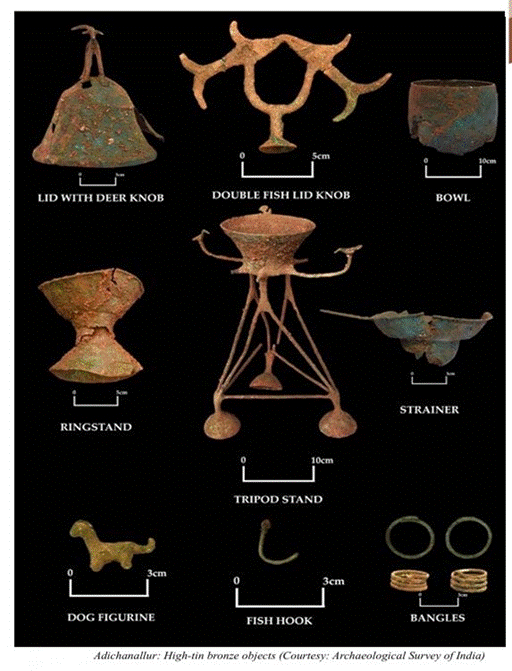
Artifacts:
- Rings
- Sieves
- Bowls
- Lids with Deer Knobs.
- Bowls with Long Stands and Decorative Birds (This distinctive type of bowl had three long stands, each surrounded by decorated bird motifs).
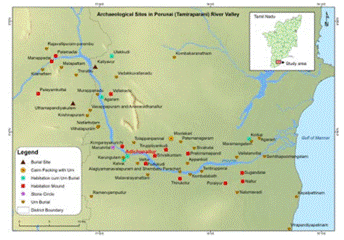
Significance of High-Tin Bronze
- The presence of high-tin bronze in Adichanallur suggests advanced metallurgical knowledge in the region, predating the widespread use of iron.
- The variety of objects and their elaborate designs highlight the skill and artistry of the artisans in the Bronze Age of Tamil Nadu.
- It is also providing valuable insights into early technological advancements in metallurgy.
- This evidence contributes to understanding the technological and cultural context of the transition from the Bronze to the Iron Age in Tamil Nadu.
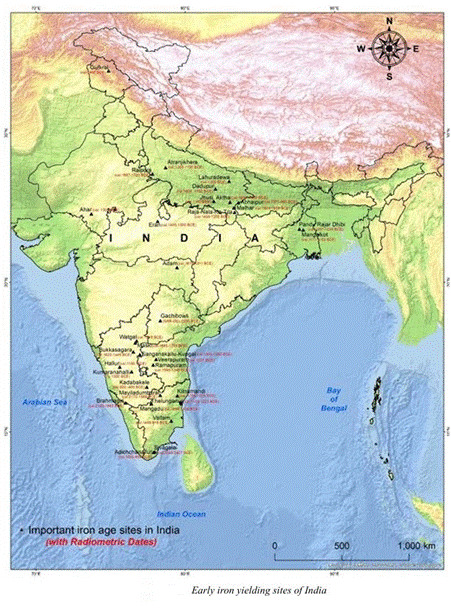
High-Tin Bronze and Early Metallurgical Practices in Tamil Nadu
Key Artifacts
- Gold Artifacts: Gold diadems or fillets, and a gold ring were significant discoveries.
- Iron Implements: A variety of iron objects were found, including swords, knives, spades, spears, arrowheads, chisels, and hangers.
- Agricultural Items: Paddy and millets were recovered, indicating agricultural practices during the Iron Age.
- High-Tin Bronze Objects:
- Double-fish motifs
- Ring stands
- Tripod stands
- Sieves
- Bowls with deer knobs
- Bangles.
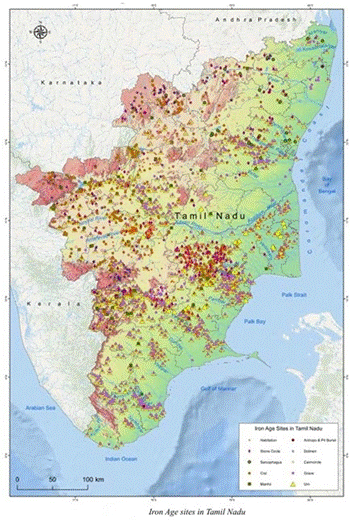
Chronology of Excavations
- The grave goods and AMS14C dates suggest burial practices began near riverbanks as early as the 15th century BCE.
Bronze Alloys and Metallurgical Analysis
- The study of bronze alloys uncovered different compositions, ranging from low-tin to high-tin bronzes.
- α-bronzes: Containing around 10% tin.
- β-bronzes: Comprising 20-25% tin.
- γ-bronzes: With more than 30% tin.
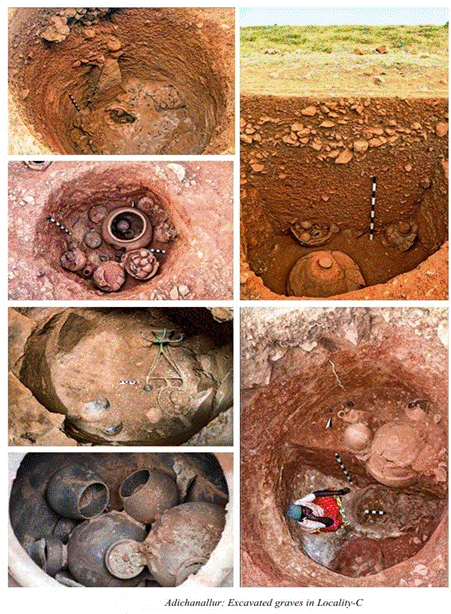
Significant Finds from Other Sites
- Sasthapuram (Tirunelveli): High-tin bronze bowls were recovered with a tin content of 36.83%.
- Other Sites: High-tin bronze objects were also found at:
- Adukkam
- Sulapuram
- Auroville
- Kodumanal
- Sivagalai
- Thirumalapuram.
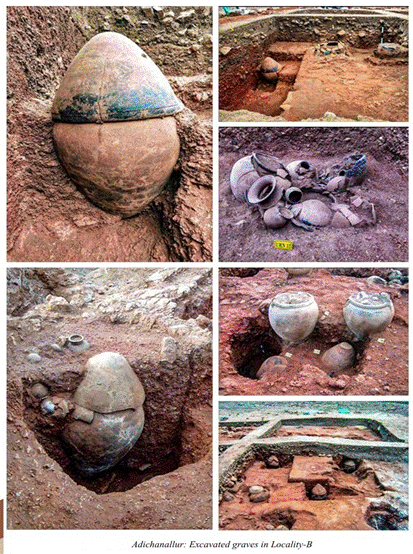
Supporting Evidence of Early Metallurgical Knowledge
- High-tin bronze found at Adichanallur, Sivagalai, and Sasthapuram, dating to the 15th century BCE.
- Discovery of ultra-high carbon crucible steel at Thelunganur and Mangadu from the 13th century BCE.
- Evidence of advanced metallurgical capabilities in the region before widespread steel use.
- Early knowledge and skill in the production and manipulation of copper, bronze, and iron, demonstrating advanced metallurgical techniques.
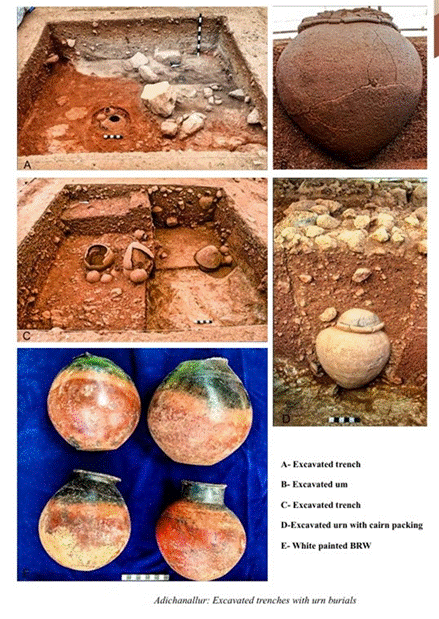
Notable Archaeological Sites in South India
- Kodumanal (Tamil Nadu) and Mel-Siruvalur (Kallakurichi district) are significant sites where crucible steel has been discovered.
- Kodumanal yielded evidence of high-carbon steel production dating back to the 6th century BCE.
- The site featured crucible furnaces, and the steel was proven to be high-carbon.
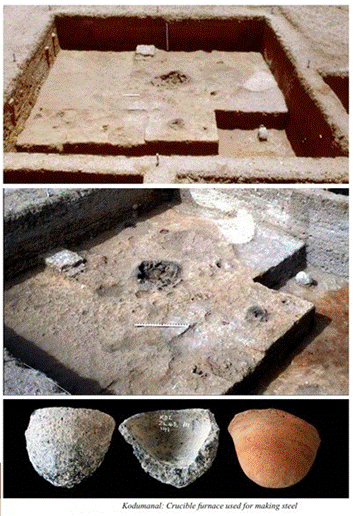
- Kadebakele (Karnataka) also showed evidence of high-carbon steel, dated between 880-440 BCE.
- Thelunganur (Tamil Nadu) revealed ultra-high carbon steel, providing further insights into the antiquity of steel production in South India.
- This suggests the region had advanced knowledge of metallurgy and steel-making techniques.
- These technologies emerged long before they spread to the rest of the world.
Impact of Wootz Steel on Trade and Craft
- Wootz steel was highly prized due to its quality, making it exported to the Middle East and Europe.
- It played a key role in the development of Damascus steel, known for its strength and ability to be forged into sharp blades.
- The presence of Vanadium (V) in the iron ores of South India contributed to the unique qualities of the steel, enhancing its strength and making it more valuable.
Thelunganur and the Discovery of Ultra-High Carbon Steel
Location and Excavation of Thelunganur
- Site Location: Thelunganur is situated approximately 10 km north of Kolathur in Mettur taluk, Salem district, Tamil Nadu.
- Size and Context: The site spans 80 hectares and is located on the right bank of the river Kaveri, within a cluster of burial sites including Mangadu, Korapallam, and Pannavadi.
- Types of Burials: The site features cist burials, urn burials, and pit burials, each accompanied by cairn circles, suggesting different ritual practices.
Artifacts Recovered
- Tools and Pottery: Excavations unearthed polished stone tools, iron objects, and ceramics such as black-and-red ware and black ware.
- Iron Sword Discovery: A well-preserved iron sword was found in a disturbed grave, revealing the advanced metallurgy of the people buried at Thelunganur.
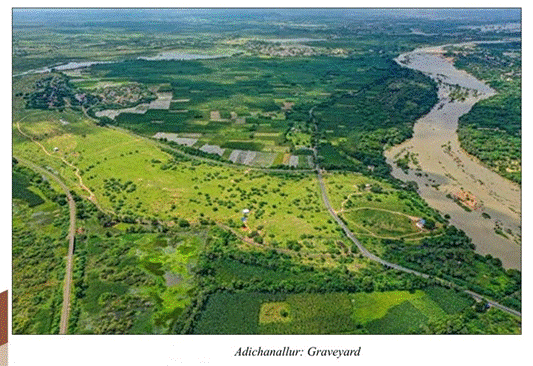
Metallographic Analysis of the Sword
- Sword Composition: The sword was identified as being made from ultra-high carbon steel, with carbon content ranging from 0.9% to 1.3%.
- Steel Quality: The sword’s high-carbon steel indicates an advanced level of metallurgical expertise, suitable for creating durable and effective weapons.
Radiocarbon Dating and Chronological Implications
- AMS Radiocarbon Dates: Two dates were obtained from the sword:
- 2900 - 2627 BCE
- 1435 - 1233 BCE
- Dating Challenges: The wide chronological gap between the two dates poses questions about whether different parts of the sword were made separately and fused later.
- Significance of Lower Date Limit: Despite the uncertainty, the lower limit date of 1233 BCE is significant.
- This places the sword’s creation in the 13th century BCE, marking the earliest steel date found in South India.
Technological Significance of the Steel Sword
- Controlled Microstructure: The sword exhibited a microstructure consisting mostly of iron carbide particles in a ferrite matrix, demonstrating advanced steel production methods.
- Properties of the Steel: This controlled microstructure contributed to the steel’s durability, strength, and flexibility, ideal for use in weapons.
- Metallurgical Expertise: The high-quality steel indicates a high degree of metallurgical knowledge and skill in producing weapons and tools.
Cultural and Technological Insights
- Advanced Metallurgy: The discovery highlights the advanced metallurgical technology of ancient South India, with steel production occurring as early as the 13th century BCE.
- Culture: The ability to create ultra-high carbon steel reflects a culture that valued precision, strength, and durability in their tools and weaponry.
Comparison with Other Steel Production Sites
- Regional Steel Production:
- The Thelunganur sword adds to evidence from other sites like Kodumanal and Mel-Siruvalur.
- High-carbon steel production is also documented at these sites.
- Widespread Technology:
- This discovery suggests that crucible steel technology (or wootz steel) was well-established in South India.
- Advanced steel production techniques were widely practiced during this period.
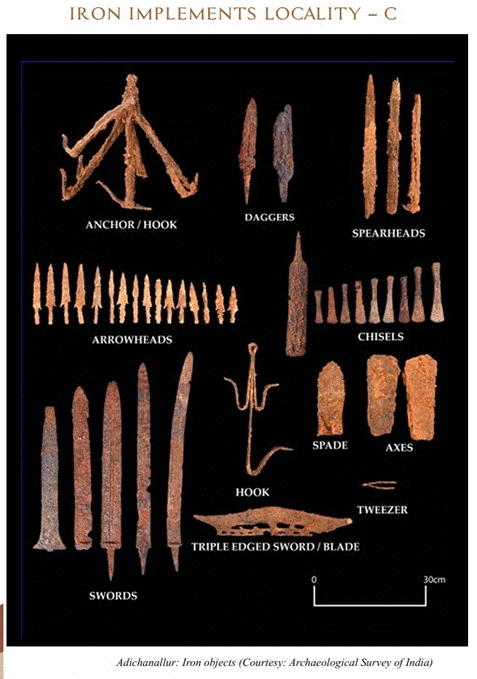
Earlier Excavations and Dating of Iron Introduction
- Sites and Dates: Excavations at Sivagalai, Adichanallur, Mayiladumparai, Kilnamandi, and Mangadu revealed dates ranging from 2500 BCE to 3000 BCE.
- This is indicating the introduction of iron in South India, particularly in Tamil Nadu.
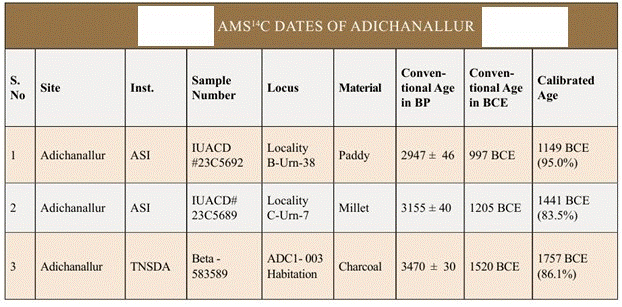
- Cultural Context: While northern regions of India experienced the Copper Age, the south, particularly Tamil Nadu, may have entered the Iron Age earlier due to limited copper ore availability in the south.
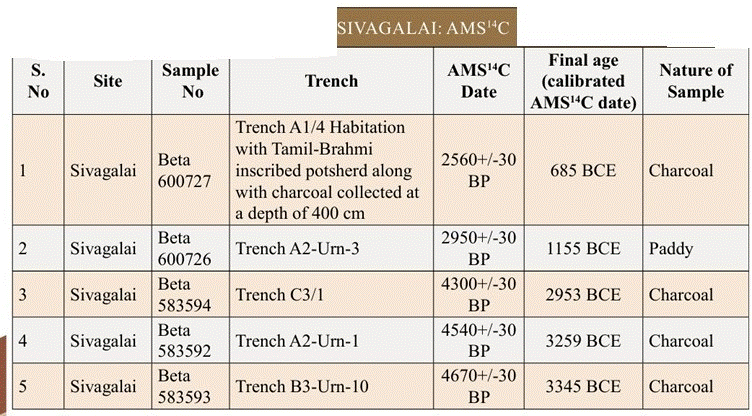
Iron Age in South India and Copper Age in North India
- Geographical and Technological Distinction: It is hypothesized that the Copper Age in the north and the Iron Age in the south were contemporary, with the latter emerging in response to the scarcity of copper resources in the southern regions.
Recent Excavations and AMS14C and OSL Dating
- Recent Dates: New excavations have provided AMS14C and OSL dates from 2427 BCE to 3345 BCE, supporting the earlier findings and further strengthening the timeline for the introduction of iron.
- Scientific Dating: These dates suggest that iron technology likely began in Tamil Nadu in the early 4th millennium BCE.
Metallurgical Analysis and Future Excavations
- Iron Artifacts: The metallurgical analysis of iron objects recovered from these sites provides critical insights into the nature of early iron working in South India.
- Ongoing Research: Continued excavations in iron ore-bearing zones are expected to provide further evidence and possibly solidify the current understanding of the timeline and spread of iron technology in India.
Future Prospects
- Clarification of Iron Introduction: Future excavations and scientific analyses will be key to clarifying and strengthening the narrative around the introduction of iron in India.
- Awaiting Evidence: The ongoing research will offer a clearer picture of the technological transitions in ancient South India and may yield new findings to refine current historical timelines.
-------------------------------------


